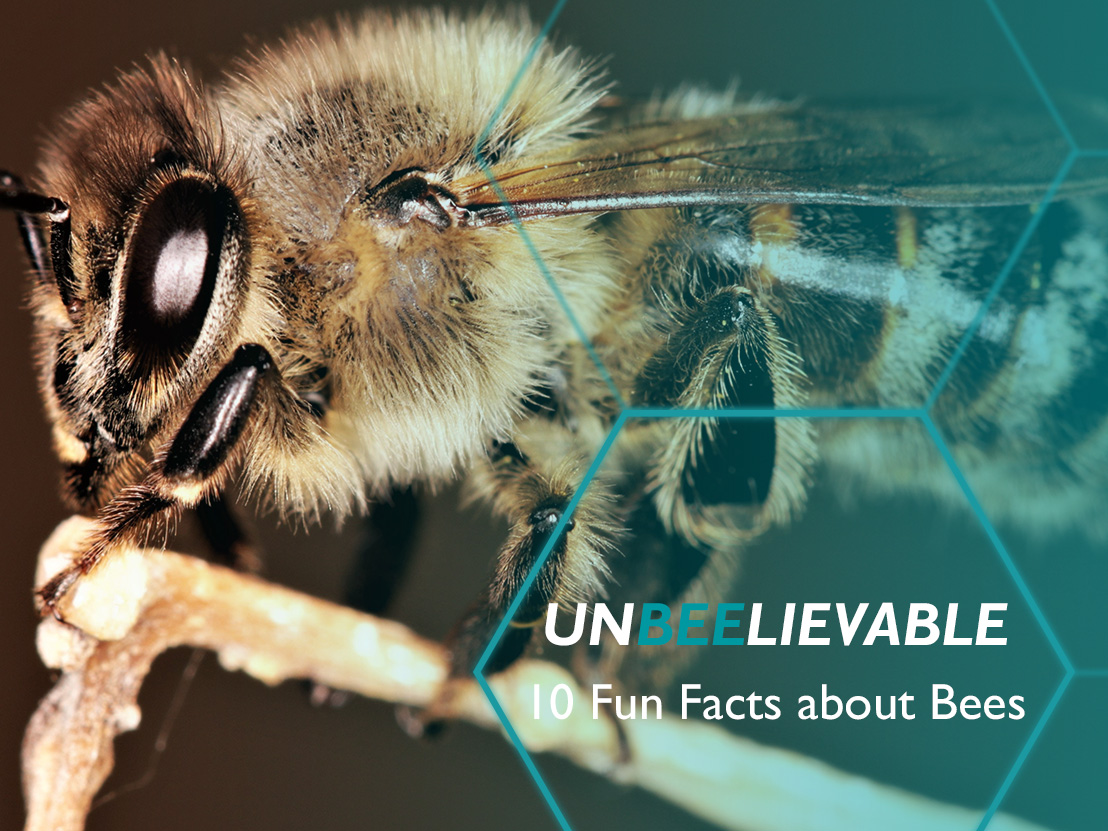
Unbeelievable
We know bees are incredibly useful animals without which we could not survive for long, but did you know what else is beehind these little insects?
1 Bees can sniff out explosives
Bees have about 60,000 scent receptors on their antennae. This enables them to detect even the tiniest scent molecules from a distance and determine the direction from which the odor is coming. Could they now even detect explosives with their fine sense of smell? In New Mexico, USA, scientists have tested this as part of the “Stealthy Sensor Insect Project” – with success. Whenever the insects detected explosives, they extended their proboscis. And researchers in Croatia also managed to train bees to sniff out the smell of TNT in land mines.
2 Elephants are afraid of bees
It’s hard to imagine when you compare the size of an elephant to that of a bee, but it’s actually true: elephants are afraid of bees. They take flight when they hear the buzz of a swarm of bees. The pachyderm’s fear has been harnessed by the Northeast Frontier Railway (NRF) in India. To prevent collisions between trains and wild elephants, loudspeakers have been set up near railroad tracks. When a train arrives, the loud buzzing of bees is heard to scare the pachyderms away from the tracks. This method has already saved the lives of several elephants.
3 Bees can get drunk
Well, who’s staggering around? A bee! How it happens: At particularly high temperatures, alcohol can form in the flower nectar. When bees help themselves to it, they can get drunk. Their condition is then similar to that of humans: they are uncoordinated and stagger around. Sobering up for a round in the hive now? Out of the question. The guard bees ensure that drunk bees are not allowed to fly back in until they have sobered up.
4 Bees on a space journey
In 1995, the space shuttle “Challenger” had a particular freight on board: bees flew into space with it to study their honeycomb constructions in weightless space. For this purpose, baby bees were separated from the rest of the colony to observe them building wax cells. In addition, worker bees were observed repairing damaged honeycombs.
5 Bees dance to communicate with each other
Bees communicate with each other by dancing. There are two types: the round dance and the tail dance. When a bee dances the round dance, it points to food sources that are no more than 100 meters away from the hive. If a food source is further than 100 meters away, it performs the tail dance.
6 Bees shiver themselves warm
When the temperature in the hive drops below 10 degrees Celsius in winter, bees shiver themselves warm with the help of their flight muscles. In this way, they can heat their home to over 30 degrees Celsius. Even with outside temperatures in the double-digit minus range, they can survive the winter without any problems.
7 Bees can sniff out drugs
Bees have a better nose than dogs. They can detect even the smallest amounts of explosives and drugs. The police union once even presented the curious idea of using bees instead of police sniffer dogs.
8 Bees remember faces
They can distinguish human faces and remember the different facial features. This is also how they recognize their beekeepers, researchers from the Universities of Toulouse, Monash and Newcastle have discovered. Scientists assume that this ability makes it easier for them to find their food sources.
9 The queen gets special food
The bee colony needs its queen for reproduction, otherwise it will die out. In order for the queen bee to become large and healthy, she is given a special juice – royal jelly – while still a larva. This is formed as a secretion in the glands of the worker bees.
10 Around the world several times for a jar of honey
A bee has to fly out about 40,000 times for 500 grams of honey. In doing so, it covers a distance three times the circumference of the earth.
Hard to believe but true. These facts offer the possibility of a completely different perspective on these small, industrious animals. And there is so much more to know. Together, we can use our skills to support the bees, just as they do for us…




